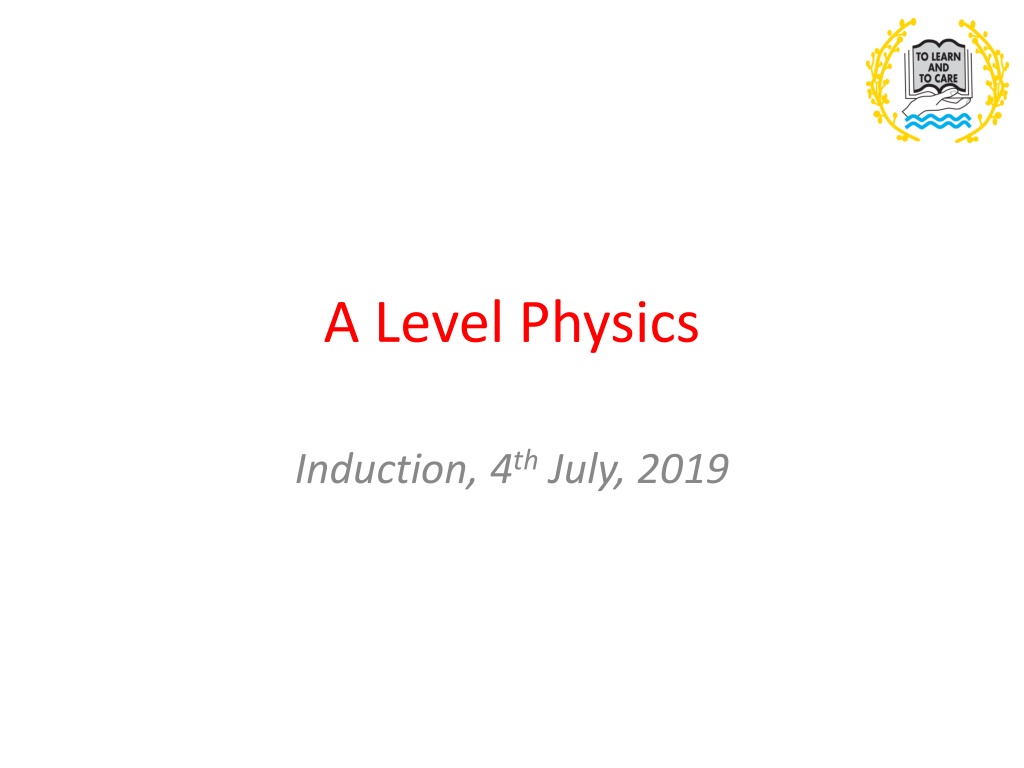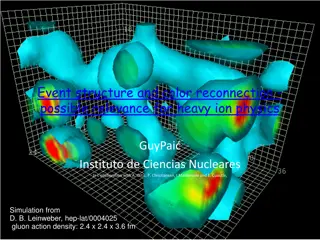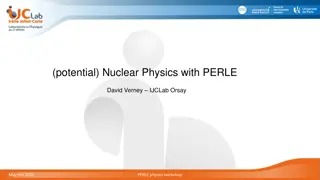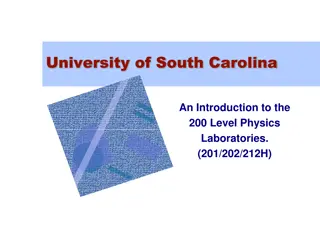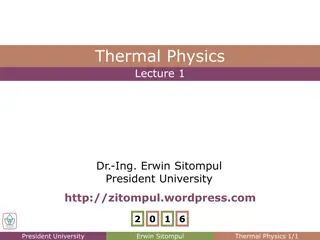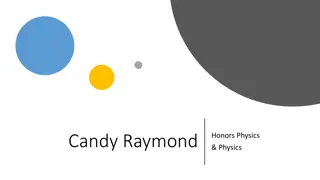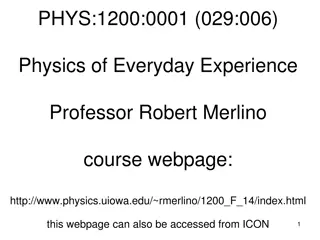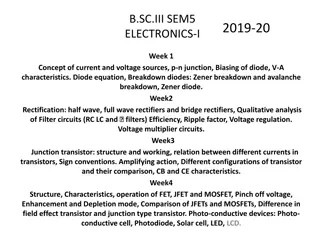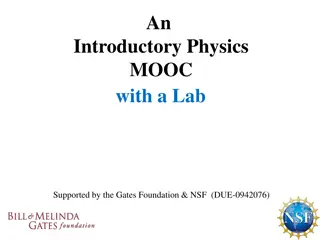A Level Physics Course Outline and Structure
The A Level Physics course is outlined, detailing the topics covered in Year 12 and A2. The course structure includes three exams at the end of the A2 course and a practical certificate of competence. Topics range from particles and radiation to fields, nuclear physics, and practical skills assessment. Exams assess various areas of physics knowledge and understanding, including mechanics, optics, electric circuits, thermal physics, and more.
Download Presentation

Please find below an Image/Link to download the presentation.
The content on the website is provided AS IS for your information and personal use only. It may not be sold, licensed, or shared on other websites without obtaining consent from the author. Download presentation by click this link. If you encounter any issues during the download, it is possible that the publisher has removed the file from their server.
E N D
Presentation Transcript
A Level Physics Induction, 4thJuly, 2019
Outline of the course You are operating under a new specification. The course is linear, which means you will sit: Three exams at the end of your A2 course (no longer sit them in Year 12) You will also receive a practical certificate of competence
Outline of the 1stYear Topics covered in Year 12 1. 2. 3. 4. 5. 6. 7. 8. 9. 10. 11. 12. 13. 14. Particles and radiation Quarks and leptons Quantum phenomena Waves Optics Vectors and scalers Mechanics and materials On the move Newton s laws of motion Force and momentum Work, energy and power Materials Electric current DC circuits Year 12 internal exam will focus on all material covered throughout Year 12
Outline of the A2 course Topics covered 1. 2. 3. 4. Periodic motion (further mechanics) Thermal physics Fields and their consequences Nuclear physics Paper 1 What s assessed? All AS material and some of Periodic motion (namely circular motion) Assessed Written exam: 2 hours 85 marks 34% of A2 Questions: 60 marks of short and long answers and 25 multiple choice questions on content Plus 1 from the following: 1. Astrophysics 2. Medical physics 3. Engineering physics 4. Turning points in physics 5. Electronics
Outline of the A2 course Topics covered 1. 2. 3. 4. Periodic motion (further mechanics) Thermal physics Fields and their consequences Nuclear physics Paper 2 What s assessed? Thermal physics, fields and nuclear physics Assessed Written exam: 2 hours 85 marks 34% of A2 Questions: 60 marks of short and long answers and 25 multiple choice questions on content Plus 1 from the following: 1. Astrophysics 2. Medical physics 3. Engineering physics 4. Turning points in physics 5. Electronics
Outline of the A2 course Topics covered Paper 3 What s assessed? Section A: Compulsory section practical skills and data analysis Section B: Students enter for one of the additional sections 1 - 5 Assessed Written exam: 2 hours 80 marks 32% of A2 Questions: 45 marks of short and long answer questions on practical experiments and data analysis 35 marks of short and long answer questions on optional topic 1. Periodic motion (further mechanics) Thermal physics Fields and their consequences Nuclear physics 2. 3. 4. Plus 1 from the following 1. Astrophysics 2. Medical physics 3. Engineering physics 4. Turning points in physics 5. Electronics
Stationary Requirements For the course, you will need the following: A4 Ring binder(s) (Lever arch) A4 Folder dividers Scientific calculator Pens, pencils, ruler Protractor Set square AQA Physics Textbook, we will provide you with this along with handouts AQA Revision guide
Forces in Equilibrium Spec Objective: Resolve a vector into two components at right angles to each other by scaled drawings and by calculation Key Terms Resultant Resolve Vertical Magnitude Vector Component Horizontal Parallax errors Free-body Scale
Horizontal and vertical components Fh Force Fh
Horizontal and vertical components Fv Fv Force
Horizontal and vertical components Fh Fv Force
Forces in Equilibrium SOH CAH TOA F2 F1 2 1 How can you calculate F3? F3 = F1 + F2 F3
Experiment! Find the weights of some of the following objects. You need to draw scale diagrams for each one and show your working! Resultant force Remember: F = mg (where g = 9.81N/kg) F1 F2 Object with unknown mass
Bridging work Attempt the questions in the bridging pack provided the skills required to complete this work are essential in A Level Physics
Final Tips Ensure you purchase your stationery before arriving in September, (1 lever arch file, dividers, stapler, calculator, protractor, set square) File notes after EVERY lesson Read ahead I will tell you what chapter to read in advance
